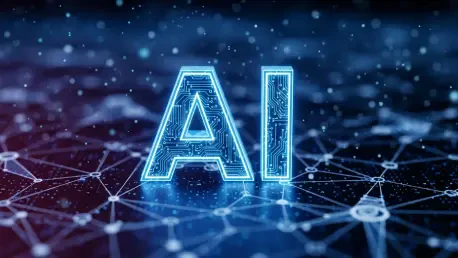Overview of a Pressing AI Challenge
In the fast-evolving landscape of artificial intelligence, a staggering statistic reveals the scale of a persistent hurdle: nearly 60% of enterprise AI models face performance degradation after fine-tuning for new tasks due to catastrophic forgetting. This phenomenon, where models lose proficiency in previously learned skills, poses a significant barrier to the seamless integration of AI into dynamic business environments. As companies increasingly rely on large multimodal models for diverse applications, from customer service to medical diagnostics, the urgency to address this issue has never been greater, setting the stage for innovative solutions to redefine how AI systems are maintained.
The AI industry today stands at a crossroads, with rapid advancements in model complexity and capability juxtaposed against the practical challenges of upkeep. Enterprises are investing heavily in AI, with global spending on such technologies projected to surpass significant thresholds in the coming years. However, the high cost and resource intensity of retraining models from scratch to incorporate new data or tasks threaten to slow this momentum, pushing researchers and industry leaders to explore more sustainable approaches to model fine-tuning.
This report delves into one such promising innovation—selective retraining—a method that could potentially mitigate the forgetting problem while enhancing efficiency. By examining the latest research, industry trends, and governance needs, the analysis aims to provide a comprehensive look at how this approach might shape the future of AI deployment in enterprise settings, offering a pathway to stability and adaptability.
Understanding Catastrophic Forgetting in AI
Catastrophic forgetting remains a critical obstacle in the AI sector, particularly when fine-tuning models for new tasks. This issue occurs when an AI system, after being trained on additional data or skills, experiences a sharp decline in performance on earlier tasks, effectively “forgetting” prior knowledge. For large multimodal models that process text, images, and other data types, this challenge is especially pronounced, as their broad applicability amplifies the risk of knowledge loss across diverse domains.
The impact on enterprise applications is substantial, as businesses depend on consistent AI performance for operational efficiency and decision-making. Key players in the industry, including major tech firms and academic institutions, are actively pursuing solutions, with approaches ranging from continual learning frameworks to modular architectures. However, the complexity of integrating these methods into existing systems often limits their practicality, underscoring the need for a more streamlined and cost-effective strategy to preserve model integrity during updates.
The Breakthrough of Selective Retraining
Core Concepts and Methodology
A groundbreaking study from a leading academic institution has introduced selective retraining as a novel tactic to combat catastrophic forgetting. This approach focuses on updating only specific components of AI models, such as self-attention projection layers and upper multilayer perceptron blocks, rather than retraining the entire system. By targeting these critical areas, the method aims to enable models to acquire new skills while maintaining proficiency in previously learned tasks.
The methodology hinges on a layer-specific strategy, where adjustments are made to components most relevant to task adaptation. Self-attention layers, responsible for contextual understanding, are prioritized for their role in integrating new information, while certain multilayer perceptron blocks are fine-tuned to minimize disruption to existing knowledge. This targeted intervention seeks to balance learning efficiency with stability, offering a potential paradigm shift in how AI models are updated.
This innovation stands out for its precision, avoiding the broad, resource-heavy retraining processes traditionally employed. By narrowing the scope of fine-tuning, selective retraining not only reduces computational demands but also addresses the core issue of knowledge retention, presenting a compelling alternative for developers seeking to enhance model adaptability without sacrificing performance.
Key Findings and Performance Metrics
Empirical results from the study highlight the effectiveness of selective retraining across multimodal models such as LLaVA and Qwen2.5-VL. When tested on specialized tasks like fine-grained bird classification and medical visual question answering, these models demonstrated significant learning gains without measurable declines in performance on unrelated benchmarks, suggesting a robust defense against forgetting.
Further analysis revealed that apparent knowledge loss during fine-tuning is often not permanent but rather a reversible bias in output distribution. This bias, frequently linked to specific multilayer perceptron blocks, can be corrected through subsequent training phases, allowing models to recover performance on held-out tasks. Such findings challenge long-held assumptions about the inevitability of forgetting in AI systems.
The stability of performance metrics across diverse evaluations underscores the potential of this method to maintain consistency. For enterprises, these results translate into a promising avenue for updating AI tools—whether for image recognition or natural language processing—without risking degradation in unrelated functionalities, paving the way for more flexible and reliable systems.
Challenges in AI Model Maintenance
Maintaining AI models at scale presents a host of challenges, with traditional retraining methods often proving prohibitively expensive and time-consuming. The financial burden of full model retraining can run into millions of dollars for large systems, while the computational resources required further strain enterprise budgets. This resource intensity creates a bottleneck for organizations aiming to keep their AI tools current with evolving data and needs.
Technical hurdles also complicate maintenance efforts, particularly the issue of output bias in specific model layers. When fine-tuning alters the behavior of multilayer perceptron blocks, for instance, models may exhibit skewed responses, such as favoring numeric outputs in counting tasks, which can undermine accuracy in other areas. Addressing these biases requires a nuanced understanding of model architecture, adding another layer of complexity to the process.
Selective retraining emerges as a potential solution to these dilemmas, offering a way to balance efficiency with stability. By focusing updates on critical layers, this approach minimizes resource use while targeting the root causes of performance issues, providing a more sustainable framework for AI upkeep in high-demand environments.
Governance and Scalability in AI Retraining
As selective retraining gains traction, the need for robust governance frameworks becomes increasingly apparent. Implementing this method at scale demands meticulous version control to track model updates and ensure consistency across iterations. Monitoring systems must also be in place to detect performance anomalies early, safeguarding against unintended consequences during fine-tuning.
Compliance with industry standards and standardized processes plays a vital role in maintaining reliability. Without clear guidelines, enterprises risk fragmented adoption of retraining techniques, which could lead to inefficiencies or errors in deployment. Establishing best practices for documentation and validation will be essential to integrate selective retraining into broader AI development workflows.
The implications for enterprise AI adoption are significant, as governance directly influences trust and scalability. A well-structured framework not only supports technical implementation but also aligns with regulatory expectations, ensuring that selective retraining can be rolled out effectively across diverse sectors, from healthcare to finance, without compromising accountability or performance.
Future Directions for AI Model Fine-Tuning
Looking ahead, selective retraining holds the potential to reshape AI maintenance practices fundamentally. If validated across a wider range of scenarios, this method could become a cornerstone of model fine-tuning, reducing the dependency on exhaustive retraining cycles. Its adoption might encourage a shift toward incremental updates, aligning AI development with the agile methodologies prevalent in other tech domains.
Emerging research areas offer exciting possibilities for expanding the scope of this approach. Investigating its applicability to diverse model architectures, beyond current multimodal systems, could unlock new efficiencies. Additionally, exploring automated tools to predict and mitigate output biases during fine-tuning may further enhance the precision and accessibility of selective retraining.
The interplay of innovation and enterprise demand will likely drive sustainable AI development in the coming years. As businesses push for cost-effective solutions to maintain a competitive edge, methods like selective retraining could see accelerated refinement, supported by collaborative efforts between academia and industry to address real-world challenges and ensure long-term viability.
Reflecting on Findings and Next Steps
The exploration of selective retraining methodologies marks a pivotal moment in addressing catastrophic forgetting, offering tangible evidence that targeted layer updates can preserve AI model performance. The detailed findings on reversible knowledge loss and performance stability across benchmarks provide a fresh perspective on a longstanding industry challenge. This approach illuminates a path to greater efficiency, demonstrating that resource-heavy retraining is not the only option for maintaining cutting-edge systems.
Moving forward, actionable steps include prioritizing the development of governance frameworks to support scalable implementation. Industry stakeholders need to invest in tools for monitoring and version control, ensuring that selective retraining can be applied consistently across varied applications. Collaborative research to test this method on diverse architectures promises to broaden its impact, addressing gaps in current understanding.
A critical next consideration involves fostering partnerships between enterprises and academic bodies to validate these strategies in real-world settings. By focusing on standardized processes and compliance, the AI community can build trust in selective retraining as a reliable solution. These efforts, combined with ongoing innovation, hold the key to transforming how models adapt to new demands, ensuring stability and efficiency for years to come.









